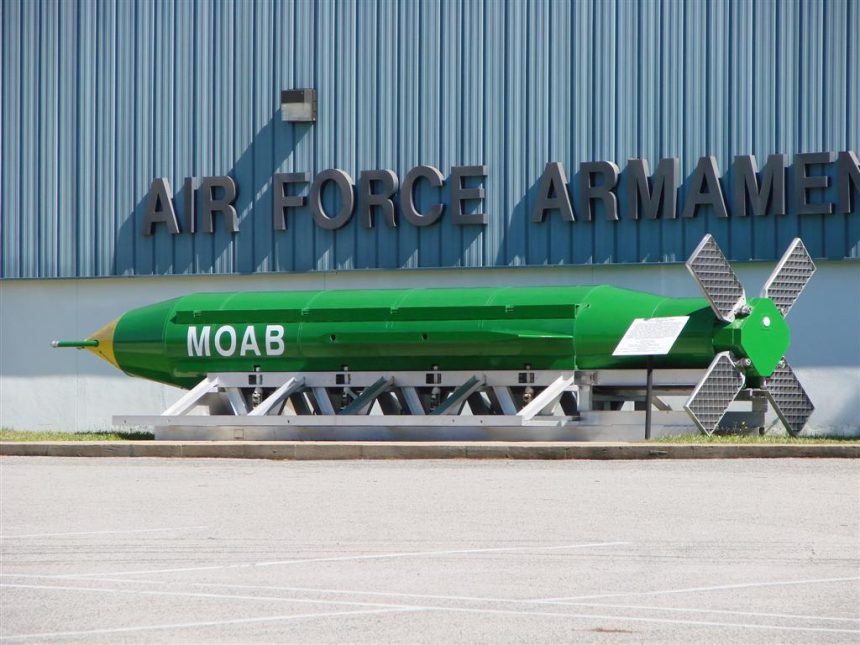First Ever Operational Use of the GBU-43B MOAB Suggests Target Was of Strategic Value.
A U.S. Air Force Special Operations MC-130 Combat Talon II has dropped the first operational GBU-43B MOAB (Massive Ordnance Air Burst) on a cave complex target in the Achin district of Nangarhar province, Afghanistan. Intelligence indicated members of the so-called Islamic State were using the cave complex. Both personnel and equipment were targeted in the strike that occurred at approximately 1800 hr.s local.
The massive, 11-ton, parachute deployed GBU-43B is the largest conventional air dropped weapon ever employed by the U.S. military. The “MOAB” produces shock, overpressure and blast effects equal to tactical nuclear weapons without residual radioactive fallout or the political ramifications associated with nuclear weapons.
The GBU-43B MOAB is deployed from a specially adapted MC-130 Combat Talon II using a system of rollers and a deployment sled. The bomb is attached to the deployment sled then pulled from the rear cargo ramp using a drogue parachute. Once pulled out the back cargo door of the MC-130 the sled falls away from the 30-foot long bomb. The bomb uses guidance wings and a system of stabilizers to maintain consistent ballistic flight trajectory and control its descent rate for more precise guidance. The MOAB uses a satellite guidance system along with internal gyros. GPS target coordinates are initially slaved from the launch aircraft then programmed into the weapon prior to release in close proximity to the target. Once released at medium to high altitude depending on target stand-off requirements the weapon uses its internal GPS for its terminal guidance to the target.
The GBU-43B is primarily intended to produce an “overpressure” or localized barometric shock wave effect to neutralize its target. The 9,500-kilogram bomb uses 18,700 pounds of H6 explosive, a combination of RDX explosive made of cyclotrimethylene trinitramine, conventional TNT explosive used in commercial dynamite and aluminum powder. The high-energy H6 explosive is made in Australia according to sources and is also used in concussive weapons such as mines and depth charges to produce a similar overpressure effect.
The shock wave generated by the massive release of energy from the explosion is transmitted through the air and into solid objects such as reinforced bunkers and cave complexes. This often results in their collapse. U.S. military officials also note a significant psychological impact to the employment of the GBU-43B MOAB because of its massive blast and the ability to produce a large mushroom-shaped cloud in certain atmospheric and terrain environments mimicking the appearance of a nuclear strike. There is no radioactive component to the GBU-43B.
According to several sources this was likely the only GBU-43B in the operational theater. Unless production has resumed, there are likely only 15 (14 now) operational GBU-43B MOAB weapons in U.S. inventory. The use of the weapon suggests that the target attacked was of strategic importance to the conflict in the region. Because of the special equipment and planning required to employ the GBU-43B this operation likely took a number of days minimally to plan prior to execution. No bomb damage assessment information has been released about the strike yet.
The MOAB should not be mistaken with the MOP (Massive Ordnance Penetrator) bunker buster bomb.















